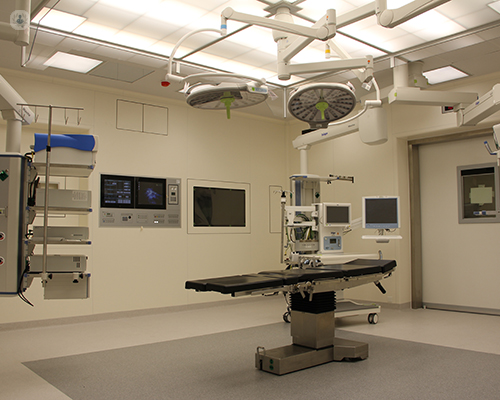Ask an expert: robotic prostatectomy
Autore:Advances in technology mean that surgery is continually improving. One of the latest surgical advances is robotic radical prostatectomy. Esteemed consultant urological surgeon Mr Pavlos Pavlakis gives us an overview of the surgery.
What exactly is a robotic prostatectomy?
Robotic radical prostatectomy is an operation performed with minimally invasive technology. It uses keyhole surgery with laparoscopic instruments, controlled by a robotic platform and surgeon.

Is robotic prostatectomy always preferred to conventional open surgery?
Robotic surgery in urology has widely spread over the last two decades all over the world/worldwide. Prostate cancer surgical treatment in particular has gained enormous popularity, allowing the operating surgeon to achieve very precise dissection of the anatomical structure, as well as promoting a short post-operative stay. Patients may only have to stay in the hospital less than 24 hours after the operation, which achieves the same oncological and functional results as open surgery
When is robotic prostatectomy especially used?
Robotic radical prostatectomy is an operation performed to remove the prostate gland for localised prostate cancer
What are the patient criteria for robotic prostatectomy?
Patients that require prostate cancer treatment with localised prostate cancer diagnosis can be offered robotic surgical removal of the prostate in the case that concomitant comorbidities allow general anaesthetic, and that the operating table is in a steep head-down position at 30 degrees.
How does robotic prostatectomy address worries about erectile function and urinary continence?
A robotic radical prostatectomy enables precise surgical dissection of anatomical structures in order to identify and visualise erectile neuro-vascular tissue. The Robotic instruments achieve 7 degrees of freedom, permitting the surgeon to perform a plethora of movements that mimic the human hand.
Additionally, it enables better visualisation of anatomy, which results in a safer operation.
What is involved in the long-term follow-up care of robotic prostatectomy?
Six weeks after undergoing a robotic radical prostatectomy, patients will have a consultation in order to discuss the final pathology results and first PSA check, which will be continued on a three-monthly basis for the first two years.
If you are considering undergoing a robotic radical prostatectomy and would like to discuss this with Mr Pavlakis, simply visit his Top Doctors profile today to book a consultation.


